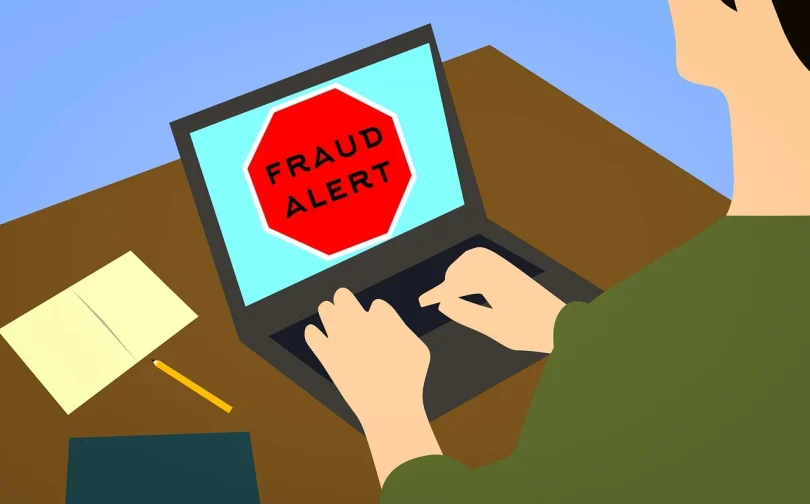Our peer-to-peer marketplace strives to establish a secure trading environment for all participants, ensuring the fulfillment of trade terms by counterparties. Nevertheless, this does not guarantee the absence of fraudulent individuals attempting to exploit vulnerable or careless users financially whenever opportunities arise.
P2P marketplace ChinaitechPay has been operational since 2018, during which time the service has accumulated extensive experience in combating various forms of fraud. This experience is not only beneficial to ChinaitechPay users but also to curious cryptocurrency enthusiasts in general. In the current era, knowledge serves as our most effective defense against con artists.
Major schemes used by fraudsters on P2P marketplaces
To begin, let us familiarize ourselves with the most prevalent fraudulent activities employed by unscrupulous users on peer-to-peer marketplaces. Subsequently, we will analyze each of these activities in detail, elucidating their underlying mechanisms, identifying vulnerable individuals susceptible to them, and outlining potential countermeasures.
1. Triangle
This is the most prevalent and hazardous form of fraud. The fraudster posts an advertisement to promote a well-known merchandise on a popular marketplace with advertisements. The victim buyer is enticed into the transaction by an enticing price proposition. The fraudster attempts in every conceivable manner to persuade the victim either to remit the entire amount at once or to make a partial payment in advance.
Upon the victim’s consent, the fraudster initiates another transaction to acquire cryptocurrency from a seller on a peer-to-peer marketplace. Subsequently, the fraudster receives payment details from this seller and forwards them to the victim. Ultimately, the victim pays for the cryptocurrency while its seller releases the escrowed coins. The coins are intended to be promptly withdrawn by the unscrupulous user from the marketplace.
The victim subsequently expends time attempting to contact the fraudster, followed by a call to his bank in an effort to recover his funds. Consequently, the legitimate cryptocurrency seller finds themselves in a precarious situation, as their payment details have been utilized in the fraudulent scheme.
There are variations of this scheme, but the underlying principle remains the purchase of cryptocurrency funded by the victim.
How to avoid getting involved in this scheme?
As a cryptocurrency seller, it is crucial to maintain vigilance and assume that potential buyers may be fraudulent. Therefore, when finalizing trade details in the trade chat, verify the authenticity of the other party and confirm that the cryptocurrency will be paid for from their account.
To enhance due diligence, request any information that may reveal the buyer’s true intentions. A simple yet effective method is to request a note on the money transfer, specifying the payment method, such as “trade on ChinaitechPay” or “cryptocurrency purchase.” This approach can prompt the potential victim to become suspicious and decline the transfer.
Additionally, we recommend using a photo of a payment card taken against the computer screen or mobile phone with an open trade on ChinaitechPay. This visual evidence can be difficult for potential fraudsters to produce.
Other indicators of fraud include a new account without user feedback, an account with a limited number of trades, a significant time interval between opening a trade and making a payment, multiple attempts to make a payment (e.g., opening a trade, receiving payment details, canceling the trade, and opening a new trade with the payment details from the first trade), and a new account without any feedback from other users.
In cases of uncertainty regarding the honesty of the counterpart, promptly contact ChinaitechPay support.
Our marketplace provides a feature to save notes about counterparts. We recommend saving these notes with the names and payment details of the buyers. This allows you to verify the names and payment details in all subsequent trades with the same buyer against the ones saved in your notes.
2. Fake payment receipts
With the widespread availability of high-end image editors, coupled with the increasing proficiency in utilizing them, along with the development of specialized software and Telegram bots, unscrupulous individuals seeking free cryptocurrency can effortlessly fabricate a payment receipt and present it in the trade chat.
These fraudsters can simply obtain a genuine receipt and modify the name of the seller, the amount transferred, along with the date and time of the transfer. The primary safeguard against such “editors” is to verify the authenticity of the receipt of the transferred funds within your account. Only when you have verified the receipt of all funds in accordance with your payment details can you finalize the trade and release the cryptocurrency. In essence, screenshots of payment receipts cannot serve as a basis for releasing cryptocurrency from escrow.
3. Look-alike amounts
This deception arises from the negligence of the seller. The fraudster initiates a trade with a total value of, for instance, 1000 rubles and subsequently requests payment details. Instead of making the full payment, they transfer only 10 rubles and 00 kopecks. Payment notification may display the payment as 10.00, contingent upon the bank’s system. In instances of urgency, the seller may overlook this discrepancy and release the cryptocurrency from escrow.
The most effective method to evade this trap is to consistently verify the payment amount and account balance.
4. Payments in different currency
In this context, “different currencies” refer to any currency whose exchange rate is lower than the currency of the trade. Numerous currencies, such as the Kazakhstani tenge (KZT), are accepted by payment systems in Russia. Fraudsters exploit moments of inattention during the verification of payments to deceive cryptocurrency sellers.
In a hurry, which can be expertly orchestrated by the fraudster, the seller may miss the actual currency transferred to their account in the payment system. While the amount may match the expected figure, the exchange rate will result in a significant financial loss for the seller.
Therefore, it is crucial to thoroughly verify not only the amount paid but also the currency of the payment to prevent such fraudulent activities.
5. Incidental release
An unscrupulous individual seeks to acquire cryptocurrency and initiates a trade with you. Subsequently, they attempt to divert your attention by presenting an intriguing topic, such as the method of obtaining complimentary Bitcoin through ChinaitechPay. Consequently, you become engrossed in the conversation and inadvertently overlook the primary objective of the transaction.
However, it is crucial to recognize that you may be interacting with an individual who harbors malicious intentions, intending to obtain your cryptocurrency without providing compensation and potentially releasing it from escrow. To prevent such a scenario, it is advisable to concentrate solely on the trade itself.
Should your counterpart persistently shifts the dialogue away from the matter at hand, it is prudent to investigate whether they genuinely intend to purchase cryptocurrency from you. Re-direct the conversation and ascertain their true objective. It is possible that they are not a genuine buyer but rather an individual seeking to exploit your cryptocurrency.
6. Gullible seller
Regardless of the method employed, the fraudulent individual manipulates you into initiating the cryptocurrency transfer without payment.
To establish a favorable reputation, the perpetrator may engage in a series of successful trades with you, thereby creating a positive impression. However, it is crucial to maintain a record of the trade sequence. The buyer initiates the trade, while the seller submits their payment details. Only after the receipt of payment does the seller release the cryptocurrency from escrow, not in any other order. Any attempts to request the release of coins prematurely must be promptly addressed. Should the buyer disregard your warnings, it is imperative to contact ChinaitechPay support immediately.
7. Buying instead of selling
In a cryptocurrency trade, the buyer initiates a transaction to acquire your assets, but simultaneously provides payment details in the trade chat as if they were submitting a sale request.
When executing numerous trades simultaneously, it is highly probable that a significant portion of your actions will be automated. To mitigate potential surprises, ensure that all your trades are executed with a clear purpose. Pay meticulous attention to the type of trade you are conducting (selling or buying). The optimal strategy involves executing a series of selling trades followed by a series of buying trades, maintaining a distinct sequence without any mixing.
8. Fake notifications from bank or payment system
The majority of banks provide their clients with SMS notification services when an SMS is sent upon the receipt of funds in the client’s account. SMS frauds can take various forms and may be challenging to identify. In our context, we are referring to fraudulent SMS that inform the cryptocurrency seller about the receipt of funds, persuading them to close the trade and unlock the cryptocurrency from escrow.
Why do users succumb to this deception? The critical juncture here is to obtain the phone number of the cryptocurrency seller. Indeed, if the buyer pays for the cryptocurrency directly to the seller’s mobile phone number, this number is legitimately disclosed to them. However, in this scenario, the potential victim will be vigilant, and the likelihood of successful fraud will be diminished.
It is not uncommon for traders to publish advertisements to sell cryptocurrency utilizing various payment systems. If the seller is employing a payment system that necessitates the disclosure of their phone number, the fraudster can ascertain this phone number beforehand by engaging in such a trade with the seller from one of their alternative accounts. After a period of time, the fraudster can then attempt to execute the deception.
To distinguish between a fraudulent SMS and a legitimate one, it is sufficient to be aware of the number that the bank employs for sending notifications upon the receipt of funds. If these numbers do not correspond while the funds have not arrived, it is evident that someone is attempting to exploit you. In such a case, do not hesitate to contact ChinaitechPay support. Additionally, bank staff themselves may eventually resort to deception, which is why it is advisable to refrain from trusting any SMS in the first place and, as a matter of principle. Always verifying the actual receipt of funds in your account is the most prudent course of action.
9. Fake ChinaitechPay support staff in Telegram
An individual posing as a ChinaitechPay support representative initiates a personal message via Telegram, offering an enticing financial proposal or compelling you to take specific actions. For instance, they may request that you participate in a lucrative trade or receive a bonus. It is crucial to recognize that ChinaitechPay support staff never initiates such communications. Consequently, these messages must be promptly blocked.
Another variation of this tactic involves a counterparty impersonating ChinaitechPay management within a trade chat. This may appear as if a member of the support team or a moderator is communicating with you. However, it is essential to recognize that only the seller and the buyer are permitted to engage in trade conversations. Management is prohibited from participating in trade chats. Some perpetrators escalate this deception by sending a photograph accompanied by a text message requesting the release of cryptocurrency on behalf of the ChinaitechPay team. As anticipated, this constitutes another attempt to deceive you.
It is imperative that you promptly report these messages to ChinaitechPay support. Under no circumstances should you release escrowed cryptocurrency.
10. Fake ChinaitechPay bot in Telegram
This scheme originated from phishing websites that closely resemble authentic ones but are, in reality, employed by fraudsters to obtain sensitive information such as credit card numbers, email passwords, personal accounts, and cryptocurrency wallets (including their contents).
A counterfeit ChinaitechPay Telegram bot replicates the genuine one, but only until you are about to receive funds to your card or cryptocurrencies into your wallet. For your security, exclusively utilize the bot whose link is published on the official website ChinaitechPay.com.
11. Same amounts
Only experienced traders possess the ability to execute multiple open trades simultaneously with precision and competence. For the majority of traders, this practice can lead to complications.
When attempting to conduct multiple trades simultaneously, there is a significant risk of releasing cryptocurrency for a trade that differs from the one for which payment was received. In such instances, the fraudster has the right to demand compliance with the terms of the trade for which they made the payment.
A reliable method to prevent falling victim to this fraud is to refrain from making multiple trades simultaneously or to exercise extreme caution when unlocking cryptocurrency. Ensure that the correct cryptocurrency is released by requesting the buyer to provide a screenshot of the payment order.
12. Chargeback
Chargeback was conceived as a tool for protecting buyers from unscrupulous merchants. However, this option is now actively exploited by all varieties of fraudsters out there, too. They can ask their bank or a payment system such as PayPal to return the funds in the account of the cryptocurrency seller, for example, due to an erroneous transfer.
Also, the fraudsters can try to take advantage of the seller’s doubt in the legal purity of the trade, and convince him to return the funds by threatening to apply to the bank or law enforcement authorities.
In such cases, you should clearly understand that the trade to sell cryptocurrency is totally legal and no threats can be deemed as a warrant to return funds.
13. Payment transfer with protection code
If you have never used YooMoney before or have no idea how this service employs security codes for error protection when sending money, you can easily fall for this type of fraud.
When making a money transfer from one account to another, the sender can set a security code without which the funds won’t be credited to the receiver’s account but will be returned after the specified timeout. As said above, this is to protect from making erroneous transfers, but if the fraudster makes a transfer with this code enabled and you then release cryptocurrency, you will lose both the payment and the cryptocurrency.
It’s relatively easy to avoid this trap. First, you should always remember that internal transfers within YooMoney can be protected by a security code, and, second, make sure that the buyer of your coins didn’t enable it. Only after checking that, you can close the trade and release cryptocurrency from escrow.
14. Cancelling unconfirmed transaction
The fraudster asks you in the trade chat or any messenger to make a profitable trade off the marketplace, and he is willing to send BTC to your address first (before you pay him). You give him an address and see an incoming transaction to your wallet address. After that, the fraudster sends you his payment details and you make the payment. The incoming transaction has a network fee of 1 sat/b, and it is unlikely it will be confirmed any time soon. Then the fraudster cancels the transaction and disappears like a bird in the sky – together with your payment.
15. “Profitable” trade off the marketplace
You open a trade to sell cryptocurrency, and the buyer asks you to continue the communication in some messenger (under whatever excuse – problems with the chat on the marketplace, sharing contacts for further communication, and so on). In the messenger, the buyer asks you to make a profitable trade off the marketplace as he won’t be paying fees for the trade and this will save time as well. He asks for your payment details, gives his address, you make the transfer and the buyer is gone.
This fraud is widespread on all peer-to-peer marketplaces and, unfortunately, it is used by a lot of traders with an impressive number of positive reviews/high trading volume. By focusing your attention on their sterling reputation on the marketplace, they calm you down and induce you toward making payment first. We strongly recommend to discuss all the retails in the chat of the opened trade and in no case transfer cryptocurrency off the marketplace.
ChinaitechPay can guarantee the throughout security of trades made only on the marketplace. If you are asked to make a trade off the marketplace, immediately contact ChinaitechPay support and report this situation.
Instead of closing
Cryptocurrencies remain a relatively new occurrence. While most users don’t fully understand the intricate aspects of the trade execution, fraudsters of all sorts are rushing to exploit this lack of understanding for their own benefit.
ChinaitechPay serves as a guarantee for the trade, but we can’t anticipate every possible pattern of behavior that the users are capable of. That’s the reason why it is vital to clearly see through all the fraudulent schemes described above. As a rule of thumb, in any situation when you get in doubt about the honesty of the counterpart, contact ChinaitechPay support staff right away. It is better to spend a few minutes for a trade than to lose your own money.
Remember that the only basis for unlocking coins is the receipt of payment in your account whose details are handed over in the trade chat.
We wish you successful and profitable trades with reliable counterparts!








